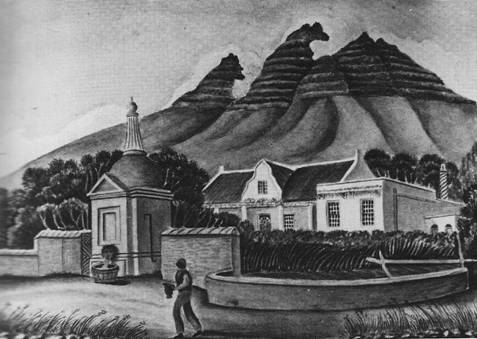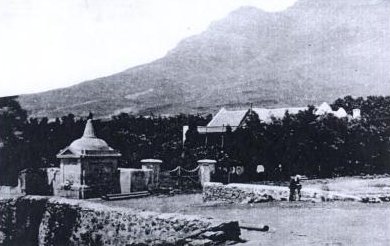
If you were a resident of
Cape Town a few hundred years ago, getting fresh water wasn't as
simple as opening a tap at home. The early residents of the Castle
had a fountain nearby, the remnants can be seen inside the Golden
Acre in Strand Street today. As the population grew and with it the
demand for water, canals were dug that carried water from the
mountain streams to the Table Valley farms (today's Vredehoek,
Oranjezicht and Gardens), and from there into open channels that
ran through the city. The Dutch settlers were very fond of these
'Grachts', as they reminded them of the canals in their homeland,
and that's how Herengracht, Kaizersgracht and Buitengracht streets
came into being. Over time these open water channels apparently
became a little miff- the Southeaster blowing dust into them, the
run-off from the streets, some lazy slaves draining the nightsoil
into the canals- which kind of spoilt it for everyone downstream.
Eventually those Grachts were closed and water pipes were laid. The
first pipes were made out of wood, in fact bored tree trunks! The
first 12-inch iron pipes were laid in Orange-, Long- and
Strandstreet, and a number of fountains were built, from which
water could be drawn. By 1834 there were 36 free-flowing fountains
in the city. Since Cape Town had continuous water shortages,
attempts were made to curb water wastage by installing hand pumps
to the fountains, operated by swaying a lever back and forth. One
remaining example is the 'Hurling Swaai' built in 1813. By 1850,
only 20% of households had running water, the remainder relied on
the servants to get water from the public fountains or mountain
streams. These public fountains must have been a centre of social
life for Cape Town's poor, as hours were spent collecting this
vital commodity. Prince Street was probably hive of activity back
in its day!
This pump is called Hurling Swaai because it was designed by a
Swedish gentleman called Hurling, and swaai because of the lever
action. The building in the background is the homestead of the farm
Zorgvliet, it is still standing today, look for the name on the
wall just a little further up the road. Apparently there was once
also a canal with two watermills to the right of the road leading
uphill towards the mountain!

bring your own pen